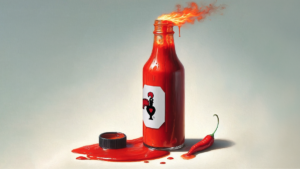The art of business wargaming

It’s 8.30 AM and a team of senior managers arrives in a City boardroom to be greeted by a table groaning with croissants, Danish pastries and Colombian coffee. The managers have no idea why they have been called in.
The phone rings and a voice at the other end says, “You are now in a cyberexercise.”
A well-known BBC presenter appears on the television screen which has stirred into life on the wall. Share prices are tumbling around the world, she reports. Unfolding before their very eyes is a crash worse than Black Monday in 1987. What do they do?
Welcome to the business wargame.
That scenario to encourage thinking out of the box and teamwork kicked off a wargame devised by John Curry, a senior lecturer at Bath Spa University specialising in games development and cybersecurity, who has worked for the Ministry of Defence and the Pentagon. He explains, “The biggest impact is making them really think about this sort of crisis, consider things which they wouldn’t normally consider . . . and they start sooner and react faster.”
Shaking up a few City types is a long way from wargaming’s Prussian origins when in 1824 Lieutenant Georg von Reisswitz was asked to demonstrate his kriegsspiel or wargame – a development of his father’s work – to the Prussian royal family, winning them over in the process.
Technology aside, the purpose remains much the same. As Pia Kirkland of Cognosis, a London strategy consultancy that has been called in by Diageo, InterContinental Hotels Group and Red Bull, says, “Ultimately, it’s used to simulate competitive scenarios to test strategies and analyse potential outcomes. The beauty of wargaming is that it enables you to do all those things in a controlled and risk-free environment.”
Although business wargaming has been closely associated with crisis management, its applications go far beyond this: from devising the strategy for a product launch to taking on a new competitor in the market. The game could last a few hours or several days, but the most important work in a wargame occurs before a scenario has even been discussed.
Who should be involved in a business wargame?
Kirkland recommends not only a mix of leadership from across the business (from marketing to operations) but different levels of seniority too. She says that the company may be missing out by not including junior staff who can “challenge the status quo and bring that fresh perspective.” Curry, on the other hand, splits his games between practising decision-making for senior management and more granular technical exercises.
Once an objective is agreed on, companies focused on competitor wargaming such as Cognosis prepare a 360-degree view of the competition. This includes interviews with ex-employees, customers and suppliers, and analysis of product quality testing, Companies House data and technical and patent reports. Kirkland likens this to an actor needing a script to perform a role. The research is used by a panel of independent facilitators or umpires, sometimes with industry experts in the chosen or affected fields, to oversee the game and ensure its accuracy.
Kirkland describes a game Cognosis ran for a global home improvement company whose UK operations were under threat by a big-spending American competitor entering the market. The managing director was aware of the threat and feared the board’s usual response wouldn’t be radical enough. According to Kirkland, Cognosis analysed the competitor to “understand what their strategy and portfolio was in other markets and what they were likely to bring to the market.”
On the first day, the room was filled with the competitor’s branding and stationery and the gamers mapped out its three-year strategy. The following day, the game shifted to the client and how they would mitigate the threat posed by the competitor’s newly formed plan. “It actually led to quite a step-change in terms of how they operated in the market,” says Kirkland.
This wargame led the company to restructure its leadership team. They brought in a new head of customer experience – an area they hadn’t really developed – and invested in new technology. These radical changes slowed the competitor’s growth and allowed the board to challenge its assumptions by seeing through their competitor’s eyes. While this sounds like an easy task to imagine, a well-run wargame does much more than that. It reveals new threats or blind spots.
The fair coin concept
Flip a coin and half the time it will come out heads and half tails. But what if the coin lands on its end? Peter Perla, author of The Art of Wargaming, has seen this happen with his own eyes. He worked as a defence researcher at the Center for Naval Analyses thinktank in Arlington, Virginia, for almost five decades and has a doctorate in mathematical statistics and probability from Carnegie Mellon University. “When I saw that happen,” says Perla, “I realised that if you’re going to have a probability distribution over an event, you need to be able to include all the possible results of that event – even things that you might think of as totally impossible, because if you assume they’re impossible, you will never predict them.”
One of these seemingly impossible events may be a global giant such as Apple suddenly launching in your company’s sector and taking over the market. And while wargaming is a brilliant tool for thinking outside the box and team building, if no actions are taken after the exercise, it’s a waste of valuable time for employees. “Typically,” says Kirkland, “we’ll sit down with the participants or the execs at the end of day one and look at the competitive strategies we’ve built. Where are the threats or where are the holes now in our strategy based on that?” Curry jokes that like any good facilitator or primary school teacher, “you have to get the children to come up with the answers themselves.”
Kirkland stresses that companies of any size could benefit from using wargaming. Curry agrees, even if it’s just a simple exercise with an industry expert. The example he gives is of a major supplier that has gone into insolvency. “How do we find a replacement product? Oh, and by the way, we really want to have it on the shelves tomorrow. That’s a simple ten-minute game. When you’ve done a few of these, you help build the mental agility to deal with these crises, which can be invaluable in the future.”
How effective are wargames in predicting the future? In the case of Cognosis, pretty effective. Kirkland reveals that on average half of what they predict in wargames comes to fruition within three years. But Perla is quick to dash one of the most common myths he hears about wargaming – that they predict the future. “These games predict how people might behave given certain circumstances, but they really can’t lead you to a measurable way of predicting the future. Not the games, but the participants of the games. Wargames don’t predict the future, wargamers do.”
This article was featured in the March/April 2024 edition of Business Leader magazine.


